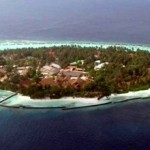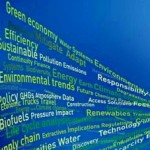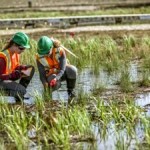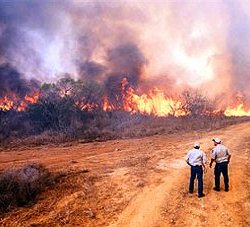
Sustainable Development is not a choice but an imperative, and the only course possible in our 21st century world, UNEP Executive Director Achim Steiner argued in his opening remarks to hundreds of top business and environment leaders attending the Business for the Environment (B4E) Summit taking place in Seoul (Republic of Korea) from 21-23 April, hosted by UNEP, the UN Global Compact and the World Wildlife Fund.
Here is the full text of Achim Steiner’s speech at the opening session of the B4E Summit on 21 April 2010.
“Ladies and Gentlemen,
Business for Environment (B4E) returns to Asia amidst an international landscape that is on the one hand full of optimism as some economies seize the sustainability agenda. And on the other, perhaps more opaque; more uncertain and more fractured than in 2009, not least on the challenge of climate change.
The global economy is certainly now showing signs of recovery perhaps and in particular in Asia. The question is whether this will be a Green Economy Recovery in 21st century with an emphasis on low carbon, clean tech, resource efficient sectors and services.
Or whether it is one that, despite some notable national exceptions, looks backwards or at the very least maintains the vacuum of the status quo.
Good News for the Green Economy
First the positive news: Some economies have put the financial and economic crisis to good use. Last year, UNEP presented its Green New Deal policy brief to its annual gathering of environment ministers.
It recommended that one per cent of GDP, invested in green investments, could go a long way to revving-up the global economy while stimulating low carbon, resource efficient sectors; generating employment and setting the stage for a more sustainable development path.
Professor Edward Barbier, one of the authors of the UNEP brief and a leading environmental economist, has assessed how far countries have so far gone.
- Of the $3 trillion spent or earmarked globally for the fiscal stimulus, just over $460 billion is aimed at green investments.
- This is equal to around 15 per cent of the total fiscal stimulus or around 0.7 per cent of the G20’s GDP.
China and the Republic of Korea lead the way at three per cent of GDP, followed by Saudi Arabia, 1.7 per cent; Australia, 1.2 per cent and Japan, 0.8 per cent. This is followed by the United States, with 0.7 per cent of GDP; Germany, 0.5 per cent; France 0.3 per cent and Canada, South Africa and the United Kingdom, 0.2 per cent.
Both China and the Republic of Korea are embedding these policy choices in medium-term planning. For example, the government here has a five-year green-growth investment plan. It will spend $60 billion to cut carbon dependency with the aim of boosting economic growth to 2020 and generating up to 1.8 million jobs.
Copenhagen Provides Cooperation, Economic and Forest Stimulus
The UN climate convention meeting also provided an ‘economic stimulus’ with developed economies pledging immediate funding of $30 billion over three years. This could rise to $100 billion a year by 2020. The funds will assist developing economies to not only adapt to climate change but to also assist in a transition to a low carbon economy. Some of the funds will also be earmarked for investments in forests under the Reduced Emissions from Deforestation and forest Degradation (REDD).
UN-REDD, of which UNEP is a key part, is preparing some nine countries including Papua New Guinea, Panama and the Democratic Republic of Congo for this new opportunity. All in all, business opportunities in areas such as renewable and clean or cleaner energy generation alongside ones in natural resource management.
The Copenhagen Accord, to which over 100 countries have now associated themselves, is also the first cooperative climate document bringing together developed and developing economies on emission reductions and constraints. If all the pledges and intentions outlined are fully met, then this too can provide Green investment opportunities.
Meanwhile some countries are pressing forward with new technologies in the field. Only a few days ago the US Department of Energy announced a carbon capture and storage project linked to a big pulverized coal-fired power station in Alabama.
Increasing numbers of financial institutions and lenders are requesting companies to disclose their carbon footprints, the latest being the Securities and Exchange Commission in New York. Meanwhile, the lending criteria of banks including the World Bank are also coming under increasing scrutiny. The recent row over South Africa’s planned coal-fired power station-its first in 15 years-is a case in point.
While the World Bank voted in favour of the close to $4 billion loan, concern by several countries did secure provisions on improved energy efficiency and investments in renewables in South Africa.
Reality Checks in a Rapidly Changing World
But distinguished delegates, there are also some reality checks here and some underlying assumptions that can flip the glass to being either half full or half empty. Copenhagen failed to deliver an international regulatory framework or legally binding treaty.
There remains debate as to the pace and scale of the $30 billion investment alongside concerns as to how much of this will be new and how much will old, or re-packaged money.
Meanwhile there is a sense of increasing bilateralism in the air. Only a few weeks ago General Electric of America and the state of California announced cooperation with China’s Ministry of Railways. The plan is to use Chinese railway technology to assist in the development of the state’s high speed rail links.
A fascinating reflection of the way geopolitics are shaping the current world. But also underlining that while the big and rapidly growing economies have the finance, know-how and capacity to receive and to invest significant sums.















